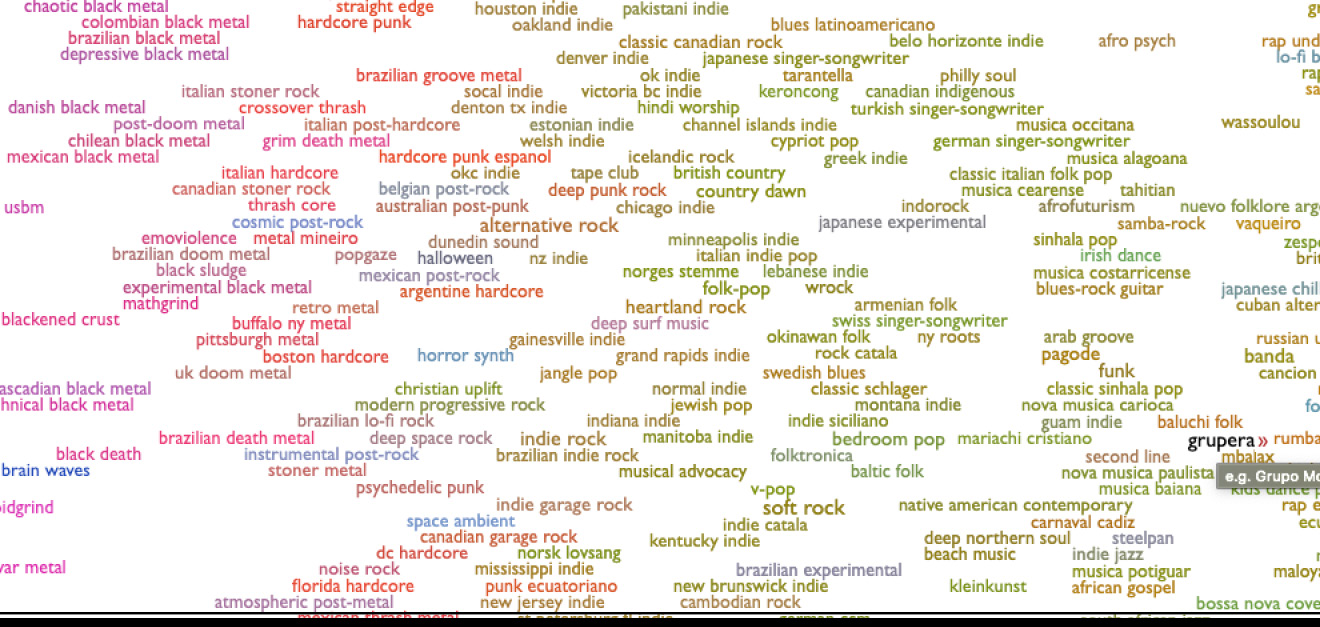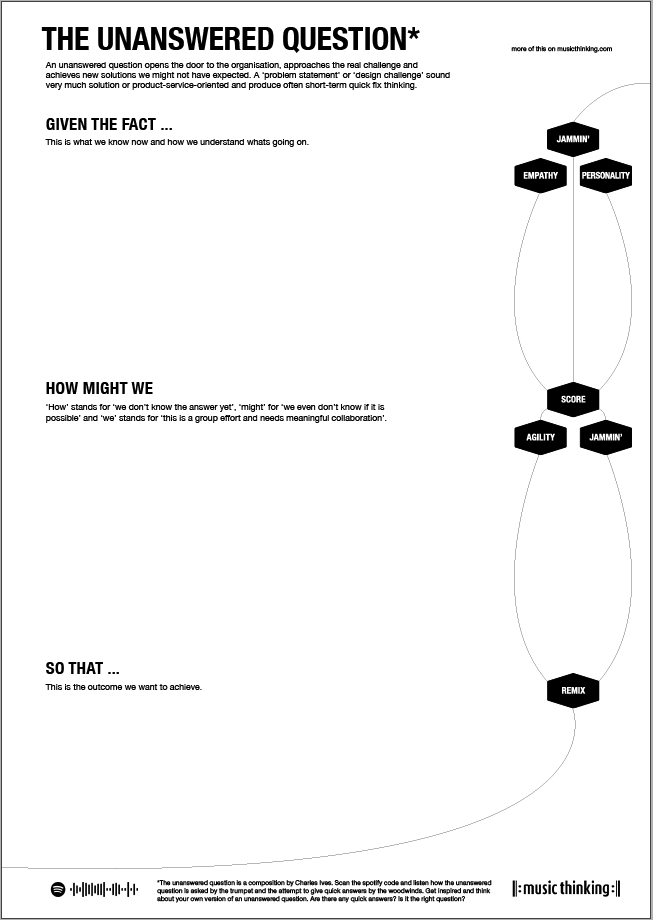Are we asking the right question? How might we change the world? The unanswered question template might help.
A short backstory
When I worked in the Design Thinking Center in Amsterdam as Chief Design Officer, I started my introduction often with: There is good news. Everybody is talking about design thinking. We have the momentum to change the world with a mind- and toolset that comes from a different craft and uses it for another – from design to business. And there is bad news. Everybody is talking about design thinking, which means that there are opinions, assumptions, experiences and many ways to try to explain and think about what design thinking might be.
Doing Design Thinking right
For the new and inexperienced, it is a workshop, a brainstorming, sticky note ideation, a sprint, a quick fix, and a solution to come up with the next disruptive cool thing. For practitioners, it is a mindset that incorporates thinking and doing and – like any craft – a minimum time to learn, use and repeat it. In its essence, there must be at least proper research, experimentation, iterative prototyping and iterative piloting, which rolls into implementation – and then improvement.
So it is not a surprise that we can read about why design thinking fails, and in the same thread why design thinking is the way to go, it just has to be done right. The same goes for other business approaches like Agile, Scrum, Kanban and Lean and Lean UX. All of them are out there in businesses all over the globe with variable experiences – and sometimes frustrations.
How can Music Thinking help here?

The discussion of using and applying different methodologies, for better or worse, is comparable to the music world. Is it rock, pop, jazz, dance, classical music, or just something we don’t know yet? For example, have a look at the website from the Spotify Data Alchemist Glenn McDonald lists 6,301 (as of December 2023) and – what they call – genre-shaped distinctions. Millions of bands strive to find their unique style by combining ‘all the above’. And they will take whatever it is to use it for their purpose or taste.
Precisely this is what organisations try to do when they shop around in methodology land without knowing how these methods work and where they link. Letting all the different influences appreciate their values and join them in meaningful collaboration for a common goal is the utmost responsibility of the leadership. Then, the audience might recognise the style and can appreciate the performance.
But how to start?
Start by asking the right questions!
I believe that we don’t change the world by asking questions that we can solve in a single sprint. Our questions should be shaped in a way that they guide us towards more insights and connect short-term and long-term thinking.
There is a lot of worth in asking the right question. For example, if you start a project with ‘How can we’ it is clear that we assume that we can solve the problem. This means that by using the word ‘can,’ we focus on the solution, not the challenge. This leads to short-term fixing and assumptions based on what we think we know.
Assumption-based projects can be costly and always have pressure at the end of the project. They come with many ad hoc changes and quick fixes to make it shippable.
It is much better to use the formula, How might we? There are many versions of the How Might We question, some call it ‘problem statement’ (Nielsen Norman Group) or ‘design challenge’ (IDEO design kit), ‘user point of view’ or just ‘beautiful question’.
The unanswered question as a guide
We all know that most client assignments start with a problem or a solution in mind. To tackle the problem or just fix the solution is the main focus. So, the biggest challenge for meaningful collaborations is to check if the assumption of the situation or solution is right. We also want to see if the research and its insights are evenly distributed in the organisation or just the ‘crazy idea of the most extroverted’. That’s why it is essential to mutually agree on what is what I suggest to call it: the unanswered question.
A ‘problem statement’ or ‘design challenge’ to my ears sound too much solution- or product-service-oriented and often stimulate short-term quick fix sprint thinking.
That’s why I prefer to call it the unanswered question; it gives the company more space to explore what exactly is going on. It also helps to connect short term and long term thinking in understanding if an iteration, innovation or transformation is needed.
The unanswered Question template

I enclosed the how might we formula into an unanswered question template with short instructions and also a Spotify link to scan with your mobile to use the music as an inspiration and explanation in the workshop.
‘How’ stands for ‘we don’t know the answer yet’, ‘might’ for ‘we even don’t know if it is possible’ and ‘we’ stands for ‘this is a group effort and needs meaningful collaboration’.
On the right side of the template, you find the six cues of music thinking. The different parts of the template correspond with one or more of the six cues.
The first part – given the fact – connects the cues JAMMIN’, EMPATHY and PERSONALITY. This means that there must be facts that give input to the SCORE that guides AGILITY and Jammin’.
And finally, everything should lead to a REMIX. And while the ensemble is performing the audience is listening and we start the first iteration.
Unanswered question storming
Try an ‘Unanswered Question Storming’ of about 50 variations of the formula above. You can print the template in A4 and ask the participants to write as many unanswered questions as possible. Start with listening to the unanswered question by Charles Ives. Get a feel what the words mean and how they send us in specific directions.
I am sure there will be one that is worth exploring.
If you have the right questions it is easy to connect all the tools and methodologies that help to realise at least the first iteration of a possible solution.
Do you still have any questions?
Please have a look at our course overview page
We have workshops for individuals and teams.
Background story: The unanswered question by Charles Ives
This was my inspiration! The unanswered question is a short orchestral piece composed by Charles E. Ives. I invite you to listen to the song and try to think about an unanswered question of your own.
A short description of the piece: the orchestration of the work is in three musical sections. It starts with the ‘silence of the druids’ – who know, see and hear nothing. The strings represent it without tempo or dynamic changes. Then, the trumpet states ‘the perennial question of existence’ in the same tone of voice several times.
The flutes or woodwinds try to answer the question and gradually become more active, faster, and louder.
For all the music lovers out there, here is an analysis of the unanswered question and more info about the composer Charles Ives, who worked most of his life selling insurance.
